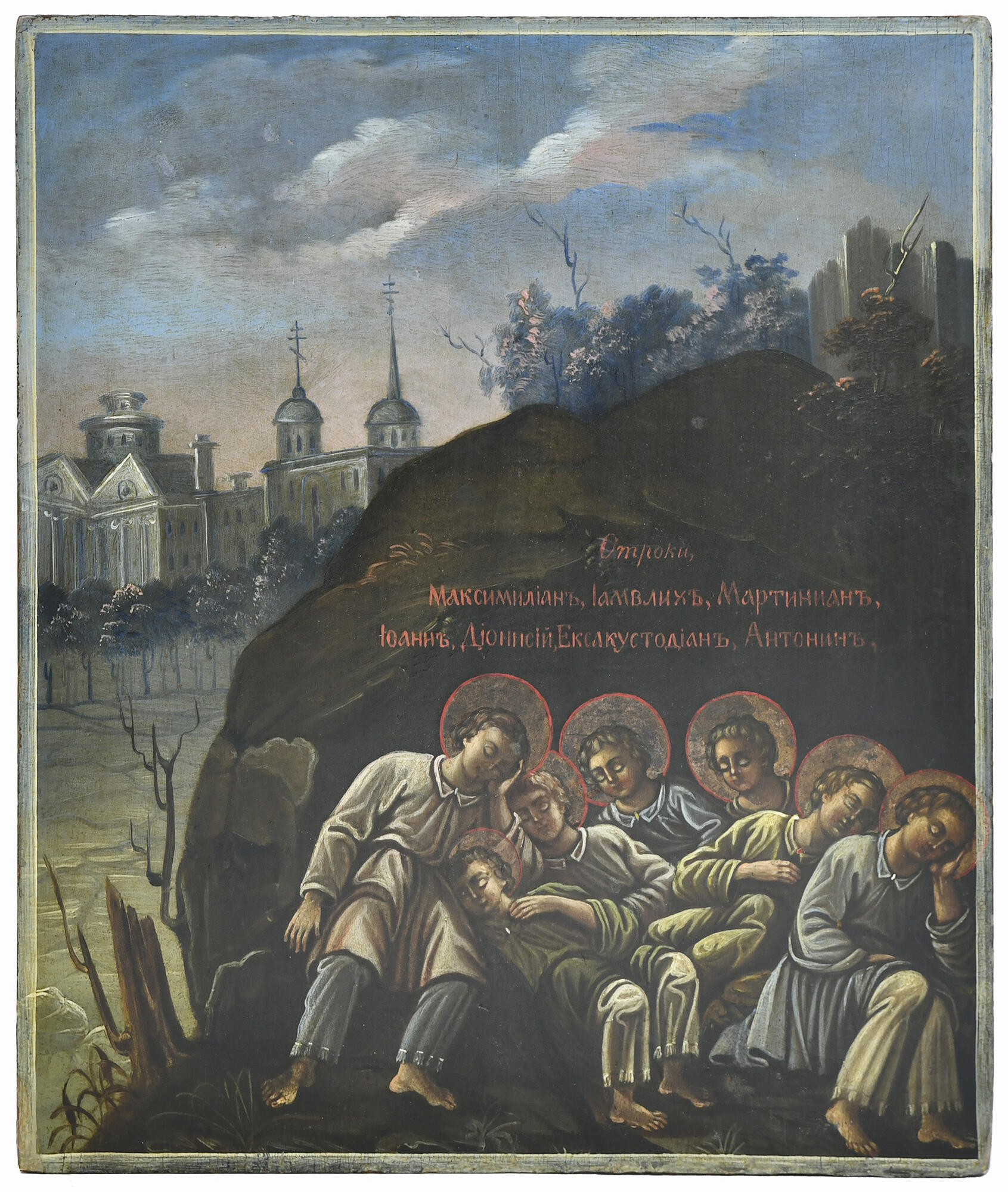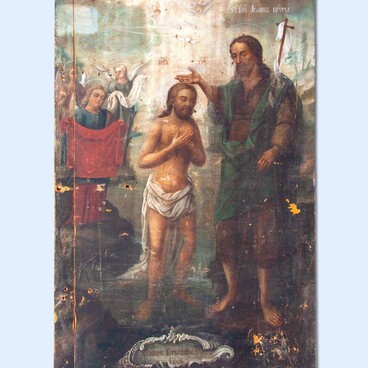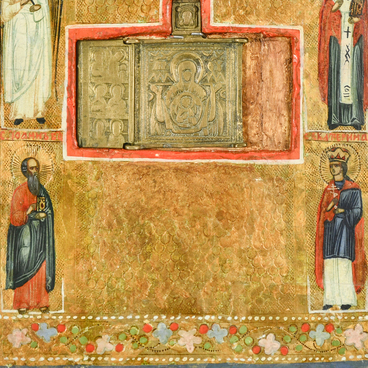The Tobolsk Museum houses an icon ‘Seven Sleepers of Ephesus’ that is rare for the Russian Orthodox Church. It was created by an unknown icon painter in the 19th century.
The icon depicts seven young Christian martyrs who, according to the Christian legend, came from the city of Ephesus in the present-day Turkey. One of them, St. Maximilian, was the son of a town governor; six of his friends grew up in noble Ephesian families. They all entered military service at a very young age.
Maximilian and his friends secretly followed Christianity, which was forbidden at the time. When the Roman Emperor Decius Trajan arrived in the city, he ordered all the citizens to offer sacrifices to pagan gods, but the seven young men refused to do so. The emperor became angry and first ordered to take their military belts, which was considered a disgrace. The young men did not renounce their faith, and Decius Trajan ordered to bury them alive in a cave outside the city. The entrance to it was sealed with stones. The two state officials who were present secretly followed Christianity. To preserve the memory of the martyrs, they discreetly placed tablets that described the story of the seven youths in the cave.
According to the story, the young men did not die of hunger and thirst but fell into a miraculous sleep that lasted for more than two centuries. When they were found alive and unharmed, Emperor Theodosius the Younger (or Theodosius the Great, according to another version) arrived in the city to speak to the young men personally. After speaking with the Emperor, the young men fell asleep again, this time until the Second Coming of the Savior.
The icon from the collection of the Bishop’s House depicts the boys asleep in the cave, in a reclining posture, leaning against each other in serene poses. They all wear loose pants and long light-colored shirts with wide sleeves and thin belts. The artist outlined the folds of their clothing in white paint and highlighted the figures of the young men in such a way that they appear to glow against the background of a dark cave. There are light brown halos over the heads of the adolescents, each one encircled by a thin red line. In the background, there are some trees and the outlines of the city in the dawn light.
The icon depicts seven young Christian martyrs who, according to the Christian legend, came from the city of Ephesus in the present-day Turkey. One of them, St. Maximilian, was the son of a town governor; six of his friends grew up in noble Ephesian families. They all entered military service at a very young age.
Maximilian and his friends secretly followed Christianity, which was forbidden at the time. When the Roman Emperor Decius Trajan arrived in the city, he ordered all the citizens to offer sacrifices to pagan gods, but the seven young men refused to do so. The emperor became angry and first ordered to take their military belts, which was considered a disgrace. The young men did not renounce their faith, and Decius Trajan ordered to bury them alive in a cave outside the city. The entrance to it was sealed with stones. The two state officials who were present secretly followed Christianity. To preserve the memory of the martyrs, they discreetly placed tablets that described the story of the seven youths in the cave.
According to the story, the young men did not die of hunger and thirst but fell into a miraculous sleep that lasted for more than two centuries. When they were found alive and unharmed, Emperor Theodosius the Younger (or Theodosius the Great, according to another version) arrived in the city to speak to the young men personally. After speaking with the Emperor, the young men fell asleep again, this time until the Second Coming of the Savior.
The icon from the collection of the Bishop’s House depicts the boys asleep in the cave, in a reclining posture, leaning against each other in serene poses. They all wear loose pants and long light-colored shirts with wide sleeves and thin belts. The artist outlined the folds of their clothing in white paint and highlighted the figures of the young men in such a way that they appear to glow against the background of a dark cave. There are light brown halos over the heads of the adolescents, each one encircled by a thin red line. In the background, there are some trees and the outlines of the city in the dawn light.



